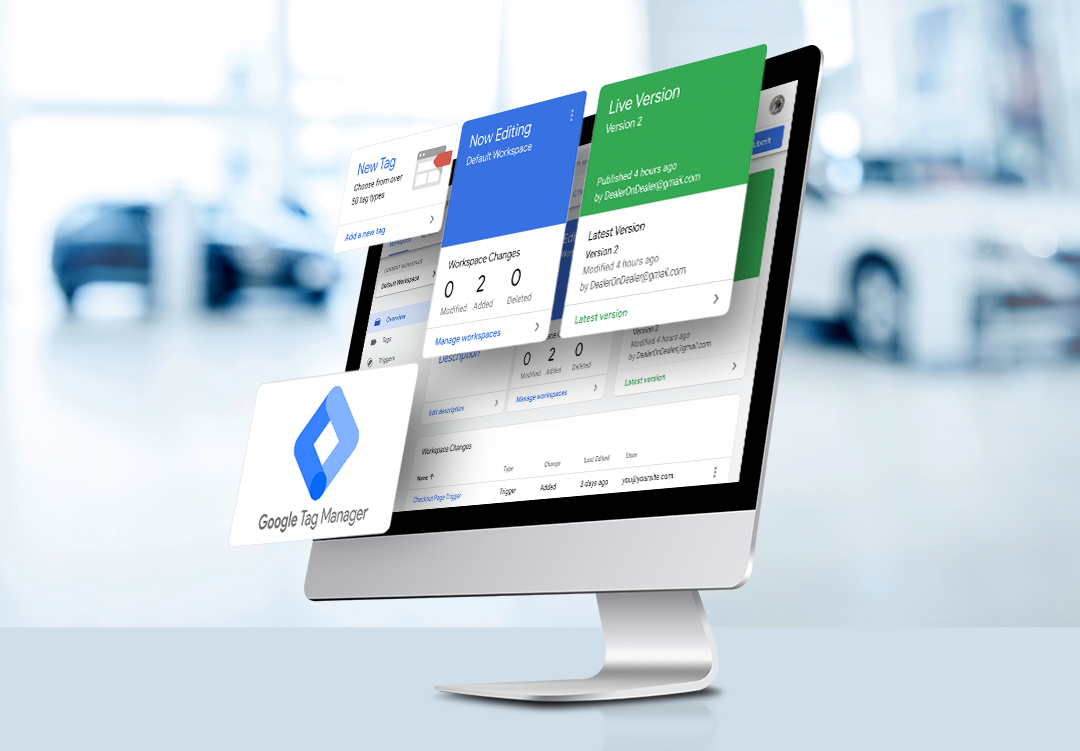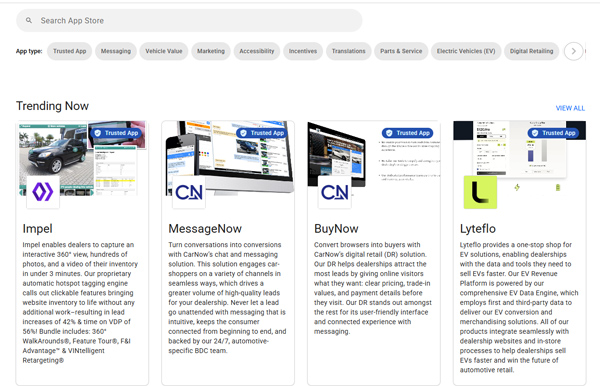

Managing Google Tag Manager (GTM) containers the right way can make a big difference in your website’s performance. This article explores what a GTM does on your site and what dealers should be aware of when installing a GTM.

GTM is a powerful tool for dealerships and agencies, but it’s important to understand the impact it can have on a website. Learn how smarter GTM management can reduce conflicts and empower your partners.
Google Tag Manager, or GTM for short, is a JavaScript file that can be placed towards the top of your website’s code. Once installed, each GTM “container” allows a user to install their own code tags or modify the website. GTM containers are used by OEMs, agencies, and website platforms to deliver code or update a pixel at scale.
GTM provides some unique benefits. Agencies use GTM because it provides the ability to make ad hoc updates and changes and can track data and performance specifically related to the individualized service. However, the negative impacts of GTM code can outweigh the benefits to the dealer.
With Great (GTM) Power Comes Great Responsibility
There have been many conversations in the industry recently about GTM and the potential negative impact to site speed. Some GTMs can have a heavy impact on site speed because of the quality and quantity of code in the container. Additionally, the quantity of containers on the site can add up, especially if a dealer partners with multiple vendors or changes partners often. In the worst cases, code deployed to a GTM can break functionality on a website or interfere with other applications. Because the website provider is not the owner of the GTM, the ability to troubleshoot on a dealer’s behalf is limited.
Here are a few tips to help you leverage the power of GTM without sacrificing performance:
- Create a “Dealer Owned” GTM for your website: The first step, if you haven’t already, is creating your dealershipname@gmail.com account, which should be the owner for all your Google products. Then, if your marketing partners need to add something to your website, it can be done in a single GTM. Multiple partners can work within one GTM, giving you a convenient command center for necessary updates.
- Audit what is installed on your site: You may have changed advertising agency partners this year, but did you tell your website provider to remove their GTM? The number one culprit for multiple GTM installed on a site is when dealers do not tell providers to remove old GTM. Reach out to your provider to get a list of GTMs you requested to be installed on your site and confirm which ones you still need.
- Understand the true purpose and value of each GTM: The benefits to the providers are clear, but are the benefits to your dealership enough to balance any negative performance impacts? Discussing the value with your partners before installing on a website should be the first step, versus approving the request without a clear understanding of the reasoning and impacts.
Dealers with a DealerOn website can be assured their sites are optimized for speed and performance. This includes identifying GTM containers on a dealer’s website and ongoing platform enhancements to increase site speed as much as possible.
Leverage the OnMarketplace
DealerOn has created OnMarketplace, a partner program that lets third-party providers update code and pixels without affecting site speed. This is another way to reduce the negative effects on Core Web Vitals. By establishing a strict set of partner standards, we ensure that dealers are protected but still able to partner with their preferred vendors.

Later this year, DealerOn will be releasing a Third-Party Performance dashboard that highlights how integrations have a low, medium, or high impact on site speed across our dealer network. The dashboard will serve as a conversation starter for having deeper, more intentional conversations with your agencies, third parties, and OEMs about the various third-party integrations on your website, including GTMs, and the impact of each. It’s our goal to empower you with the information you need to make data driven decisions about what to include or exclude on your site.
We know the Google landscape can be overwhelming. Our DealerOn webinar on June 26th will break down all the new Google features and what every dealer should know about Google products. Register now and save your spot!
Featured Articles from DealerOn University
- Why Paid Social Is a Must Have in Your Dealership’s Automotive Media Strategy
- 3 Ways to Highlight Electric Vehicles on Your Website
- Essential Strategies for Mastering SEO
- Optimizing Inventory Merchandising to Boost Engagement and Sales
- Five Ways to Highlight Certified Pre-Owned Vehicles on Your Website


